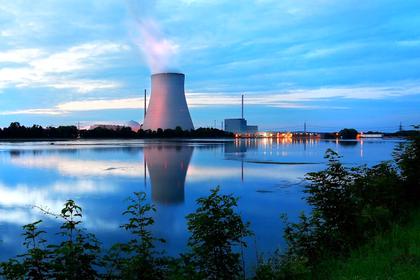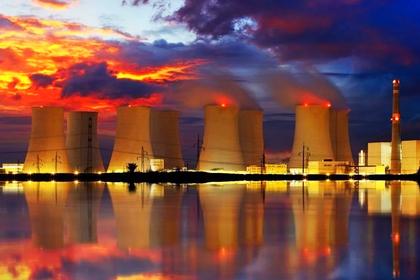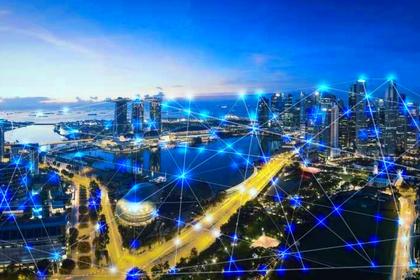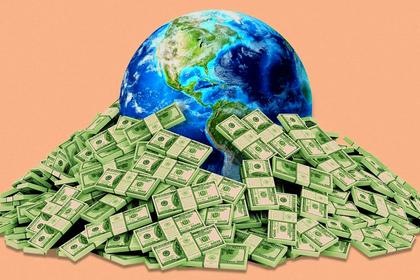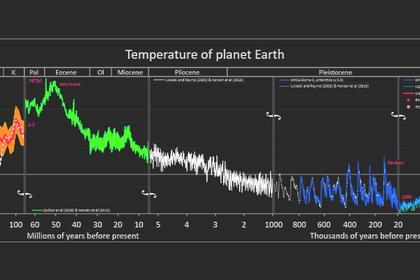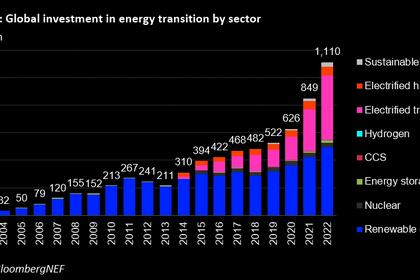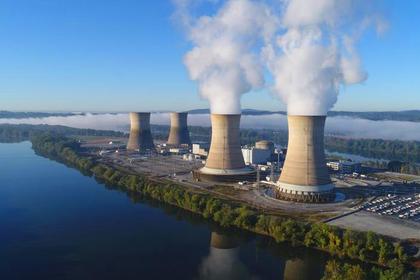
GLOBAL NUCLEAR ENERGY IS A KEY
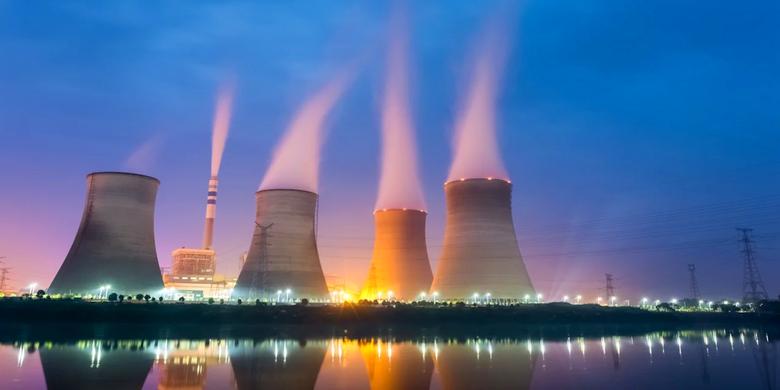
IAEA - OCT 9 2023 - IAEA Director General Rafael Mariano Grossi made his remarks at the Second International Conference on Climate Change and the Role of Nuclear Energy 2023: Atoms4NetZero, taking place this week in Vienna, Austria.
Four years ago, when the first IAEA Conference on Climate Change and the Role of Nuclear Power took place, the world was in a different place. Nuclear power, by and large, was still struggling for a place at the table at the world’s most important discussions on energy production and climate change.
Today, the outlook for nuclear power is brighter, and nuclear power has pulled up a chair at many of the most important of these global discussions, including the UN Climate Change Conference, where we will again be present this year with our dedicated pavilion to make the case for nuclear energy in both climate mitigation and adaptation.
More and more countries are considering or already embarking upon the introduction or expansion of nuclear power, amid mounting concerns not only over climate change, but also energy access and security of energy supply.
This growing global support for nuclear energy is reflected in our latest annual projections for nuclear power in the coming three decades.
In our new outlook for global capacity for nuclear electricity generation by 2050, published this morning, the Agency has revised up its projections for the third successive year. Our high case scenario now sees nuclear installed capacity in 2050 more than doubling to 890 gigawatts electric, compared with today’s 369 gigawatts.
Our projections this year represent an almost 25% increase from our outlook in 2020.
Our new projections are only slightly above what the IEA, in its latest Net Zero Roadmap released last week, sees as the required contribution of nuclear power to achieve the Paris Agreement’s goal of limiting the rise in global temperatures to 1.5 °C above pre-industrial levels. (870 gigawatts).
We will have a chance to hear directly from IEA Executive Director Fatih Birol, who will deliver our keynote address.
What is driving the Agency’s projections? Besides climate change, amid today’s geopolitical challenges, countries increasingly recognize that nuclear energy is a key contributor to the security of energy supply. As a result, many of them are extending the lifetime of their existing reactors, considering or launching construction of advanced reactor designs and/or looking into small modular reactors, including for non-electric applications.
This last point is significant. Beyond providing clean 24/7 electricity production, nuclear power can also make a significant contribution to the decarbonization of hard-to-abate sectors such as industry, transportation and buildings, which together represent 60% of global greenhouse gas emissions.
It can do this by providing process heat for industries such as cement and steel making, or clean hydrogen for a variety of applications, and district heating for buildings. Nuclear can also help address the growing need for fresh drinking water by lowering the carbon footprint of the desalination process.
SMRs [Small Modular Reactors], through their greater flexibility in deployment and operations, can contribute to decarbonizing these sectors beyond electricity. And many other cutting-edge advances in nuclear energy such as AI, robotics and 3D printing can also contribute, as was highlighted at our recent Scientific Forum, Nuclear Innovations for Net Zero, held during the General Conference last month.
Public opinion is swinging towards nuclear and we must act on this. Being an environmentalist and pro-nuclear used to be seen as an oxymoron.
Seventy years after US President Dwight D. Eisenhower’s famous “Atoms for Peace” speech, it is time to fulfil that vision.
The tide is turning. This should give clear-minded policymakers and financial decision makers the courage to act.
But here, I believe things are moving too slowly. We cannot afford to be slow. Every day we see the urgency of our task in receding glaciers and shorelines, and we hear it from island nations and developing countries most directly affected by climate change.
The transition to a green economy risks being more disruptive and more expensive (and therefore more politically treacherous) without nuclear. We are already getting a taste of the sociopolitical backlash today.
“Nuclear is too expensive and to slow” is a false narrative. “Nuclear energy or renewables” is a false narrative. Those false narratives are to the detriment of everyone, especially when it comes to achieving a fair and enabling investment environment for new nuclear projects.
We are not at a level playing field yet when it comes to financing nuclear projects. I believe international financial institutions, development banks, and private banks and investors should take a fresh look at this issue. We know that nuclear power is a winning investment for the environment and for energy access and security of supply. It can also be a winning financial investment over the long term. We need to think long-term and we need to realize that what may once have been a “courageous” political decision is now one increasingly backed by the public. In survey after survey, the general public is saying more loudly every year that they believe nuclear energy must be part of the climate change solution.
When it comes to financing, decisions need to be taken from a technologically agnostic view that is based on science, fact and reason. Outdated ideology and misplaced fear should not stand in the way. Nuclear power needs to be regarded simply as a viable low-carbon technology.
The United Nations Framework Convention on Climate Change’s (UNFCCC) first stock-take of the 2015 Paris Agreements was released recently. It is still in process, but the Synthesis Report includes civil nuclear energy as an area in which Parties should facilitate, accelerate and strengthen international investment. It will be telling to see whether it remains in the final report. I very much hope it does.
The new EU taxonomy takes us in the right direction, but we are not fully there yet and this conference will seek to shed light on what more needs to be done.
Governments and investors need comprehensive, science-based data to make informed choices about major infrastructure projects. But they are working with a data hole in their calculations of how we get to net zero! Too often, nuclear power is missing from energy scenario studies used by governments and investors. This, despite nuclear’s proven role in mitigating climate change and enhancing energy security and sustainable development. This is where the IAEA’s Atoms4NetZero initiative, which I launched at COP 27 last year, comes in.
This year at COP, countries using nuclear energy will gather around the global convening point of the IAEA to state the reality: they use, they will continue to use, and they will increase the contribution of nuclear energy to the energy mix.
Atoms4NetZero includes nuclear power in comprehensive, data-driven energy scenario modelling aimed at achieving net zero emissions. This includes using nuclear power not only for electricity generation, but to help decarbonize those vast hard-to-abate sectors.
Without such credible data, governments and investors may continue to sit on the side lines when it comes to financing new nuclear projects. But with the science-based data, they will be able to make the case for nuclear’s role in getting them to net zero. With that data, they will be able to construct their investment case.
I urge you to make use of this important initiative, to build the data-based foundation that can drive forward your nuclear power projects.
Over the course of this week, you will hear more about Atoms4NetZero and more about many other related topics including the non-electric applications of nuclear energy.
We will explore how nuclear power is needed now more than ever to support the massive rollout of intermittent renewable sources that so many countries are undertaking.
We will look further at ways to improve the competitiveness of the nuclear industry, so that it can more consistently build on time and to budget; how governments can help to ensure a stable and enabling policy framework for nuclear investments; and how regulators can continue to provide their vital oversight while also providing clear regulatory frameworks.
After all, basic access to energy remains a challenge for many countries. So, it is no surprise that around half of the nuclear newcomers the IAEA works with are from Africa alone. These countries will need support and access to financing to achieve energy security through nuclear power. This too we will examine.
If SMRs and advanced reactors are to make a real contribution to net zero, they must be safely and securely deployed in a timely manner. The IAEA’s safety standards and security guidance provide the basis for governments to build a robust regulatory regime for the safe and secure operation of nuclear power.
Our Nuclear Harmonization and Standardization Initiative is seeking to facilitate the effective deployment of SMRs and advanced reactors, by bringing together policy makers, regulators, designers, vendors and operators to develop common regulatory and industrial approaches. I am pleased to report that, since we started work a year ago, progress has been made on the two tracks of this key initiative, including the recent publishing of a working paper outlining why serially manufactured industrial products are crucial for the reliable deployment of SMRs.
The Agency is also carefully studying the impacts climate change on our energy systems. We know this can be a threat, but we also know that through careful measures, the resilience and robustness of nuclear power plants can withstand these impacts.
Timely deployment of nuclear power and all low carbon energy sources requires sustained engagement with all relevant stakeholders. This event will also look at the NIMBY phenomenon that often plagues low carbon energy projects to explore new ways to turn these cases into YIMBY, or Yes In My Backyard, in an event that will also include experiences from the renewables sectors. “Yes, in my back yard,” is what we hear from Onkalo to Ontario and in many other communities around the world which have experience hosting nuclear facilities.
On my recent visit to Sweden I saw clearly how transparent stakeholder engagement can shift opposition, not to neutrality, but for active embracing of nuclear, where communities vie for the opportunity to host nuclear facilities, including waste facilities. The GHG mitigation benefits and the energy security benefits of nuclear are clear, and so are the investment benefits for the communities involved, including those communities transitioning from the coal industry.
In closing let me come back to where I started. We have come a long way in four years. Four years ago, we held the first IAEA Conference on Climate Change and the Role of Nuclear Power. Four years ago, I was a new Director General of the IAEA. Now I stand before you at the start of my second term.
Today, nuclear has a place at the table. But our task is not finished. Too often nuclear power is not credited with the enormous role it already plays in mitigating emissions and fully appreciated for the crucial part it must play in creating the low-carbon economy that will allow us a sustainable future on this planet. In financing, too often nuclear energy’s benefits to grid stability and the scale and longevity of its low-carbon energy production are not fully factored into the calculations. Too often, instead of talking about nuclear as a friend and enabler of wind and solar, people talk a zero-sum competition.
To be pro-nuclear is to be pro-environment. To be pro-nuclear is to be in favour of wise investments. To be pro-nuclear is to take our long-term responsibility to this planet and its future generations seriously.
We are on the same team. All low-carbon energy sources need to come together and join forces if we are to achieve a sustainable transition to net zero that meets the ever- tightening timeline we know we face. This is the reality. There is no time to waste and no time for zero-sum thinking. There is no credible obstacle keeping this from happening. It’s time to sit down together and forge a sustainable path.
-----
Earlier:
